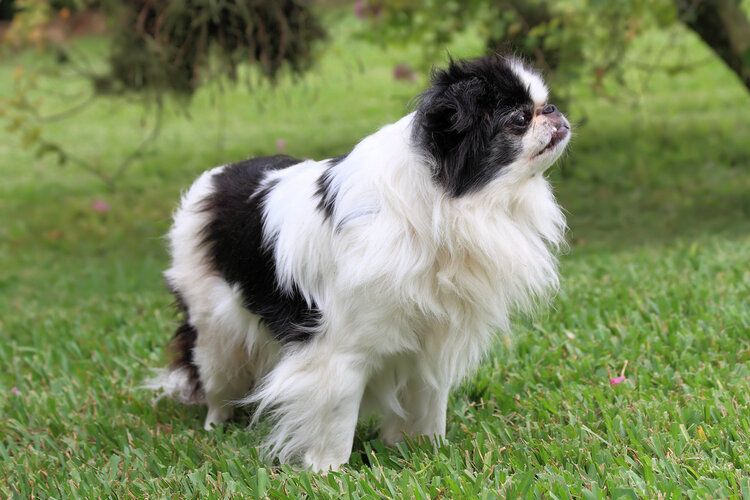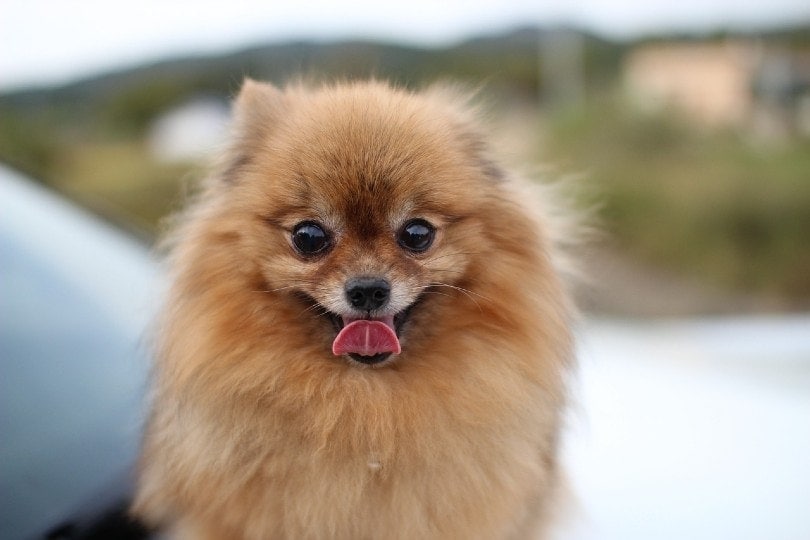16 Dog Breeds With Low Prey Drives (With Pictures)

Updated on

Dogs make perfect pets, but certain primal behaviors are incredibly difficult to breed out of them.
One of the most pronounced of these behaviors is their prey drive, which can cause them to chase and attack other animals. This drive can make certain breeds less compatible with other pets, especially smaller ones like cats, and it can also make every walk a nerve-wracking experience, as you live in fear of your dog spotting a squirrel.
Not every breed has a strong prey drive, however. While it’s impossible to promise that any dog will be able to resist chasing other animals, the dogs on the list below tend to have much lower prey drives than other breeds, making them a great choice for multi-pet households.
The 16 Dog Breeds with Low Prey Drives
1. Maltese

This may feel like cheating—after all, what can a Maltese possibly hunt?—but the fact is that many smaller breeds are excellent hunters of cats, rodents, and other animals. The Maltese, on the other hand, tends to be pretty lazy, so unless the other animal climbs into his mouth, it’s likely to be safe.
2. French Bulldog

These pups are very similar to the Maltese, with one big advantage: they bark a lot less. French Bulldogs have very short noses and are prone to breathing issues, so even if they decide to get off their lazy duffs to chase something, they’ll likely run out of wind long before they can bring it down.
3. Golden Retriever

Oddly, a dog that was bred to fetch downed game would have such a low prey drive, but Golden Retrievers are lovers, not hunters. Their prey drive varies from individual to individual, though, so while most of them aren’t big chasers, there are a few that love to run down smaller game. (Tennis balls, of course, should live in constant fear of every Golden Retriever.)
4. Papillon

These toy dogs enjoy making friends and playing with them more than chasing anything, making the Papillon a great choice for a house that already has cats in it. That being said, they’re still prone to pestering the living daylights out of any cat that won’t play with them.
5. Vizsla

Like Golden Retrievers, this breed was originally created to be a hunting dog—and like Goldens, Vizslas would rather do just about anything than chase down game. Then again, they love to curl up on the couch next to you, so they may still want to watch hunting shows on TV.
6. Cavalier King Charles Spaniel

These lapdogs would rather stick next to you and try to finagle some treats out of your hand than chase after other animals. The Cavalier King Charles Spaniel is a smart breed, and they certainly understand that finding a comfortable lap is much more rewarding than running after a cat.
7. Boxer

Boxers are big, lovable dunces, and they’d rather wrestle with their owners than pursue other animals. That being said, they do love to tussle, so any cat unlucky enough to come across their path runs the risk of finding itself in the middle of a friendly rasslin’ match.
8. Great Pyrenees

These giant dogs were bred to protect other animals, not harass them. Despite their massive size, the Great Pyrenees is a lovable lug, and they’re much more likely to act as a bodyguard to any other pets in the house than a bully.
9. Bichon Frise

These little fluffballs aren’t likely to chase the cat, but they will likely bark at it. There’s not much risk they’ll act on their threats (and if they did, the cat would likely put them in their place), but they can be annoying to other animals all the same.
10. Japanese Chin

While not a well-known breed, these tiny pups act more like kittens than canines. The Japanese Chin loves to swat things with its paws, and they’ve been bred to stay calm rather than react instinctively. Who knows, they might even curb some of your impulsive desires.
11. Old English Sheepdog

Like the Great Pyrenees, the Old English Sheepdog was created to act as a bodyguard, not an assassin. They’re not very reactive towards other animals—except wolves, but if you have a wolf in your house you have bigger problems than we can help with.
12. Havanese

The Havanese is often mistaken for the Bichon Frise, and they have similarly laid-back styles. They prefer to stick close to their owners rather than wander off alone, but they may try to chase off any animal that gets too close to their family.
13. Irish Setter

These pups are incredibly smart and obedient, so while they’re not prone to running after other creatures, you can usually call them off if they do. However, they’re usually more inclined to make friends than to try to chase down a snack.
14. Black and Tan Coonhound

Black and Tan Coonhounds don’t do well on their own, so they’ll look for companionship wherever they can find it, even if it’s with a cat. Of course, they don’t like to take “no” for an answer, either, so your feline may find itself with an unwanted new best friend.
15. Beagle

The Beagle isn’t likely to hurt another animal and is a dog breed with a low prey drive, but they will sometimes play with them against their will. As a result, they should be supervised with other pets, but chances are they’ll be too grateful to have another pack member to risk doing anything to screw it up.
16. Pomeranians

Everything with this breed depends on how well you socialize it. If you do a good job, then your Pomeranian should get along with all sorts of animals and people. If not, they’ll likely drive other creatures crazy with their incessant barking. Also, be careful when letting them roam outside, because owls, coyotes, and other animals love to make their acquaintance—but not for reasons you’ll appreciate.
Final Thoughts
The breeds on this list aren’t likely to chase after every animal they come across, making them calm and reliable pets. However, we want to stress again that every dog is an individual, so just because these are dog breeds with low prey drives doesn’t mean your pet won’t run after a cat, squirrel, or other animals.
That being said, these dogs could make a great addition to any household that already has other pets living in it.
Featured Image Credit: Fotyma, Shutterstock











